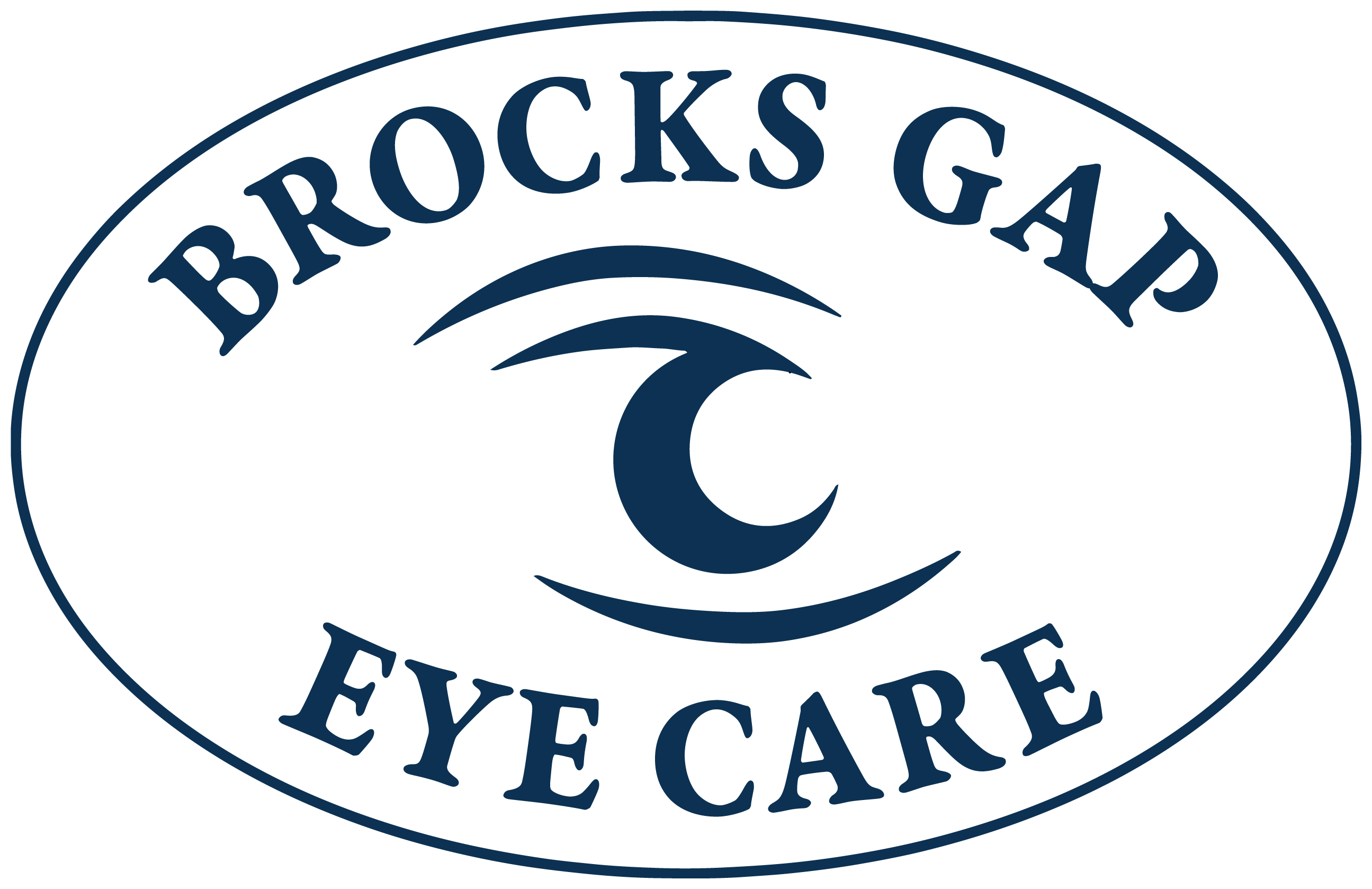Eye Exams
Regular eye exams are a critical part of ocular health. Annual comprehensive eye exams allow detection of vision problems and eye diseases in their early stages, many of which lack symptoms. This article will examine what takes place during a thorough eye exam and the conditions that our experienced eye doctors at Brocks Gap Eye Care routinely screen for.

Reasons to Get an Eye Exam
An annual eye exam serves several
important purposes:
-
Identify refractive errors like nearsightedness, farsightedness, astigmatism, and presbyopia, which require prescription eyeglasses or contact lenses to correct. Catching vision problems early allows for early intervention to prevent permanent vision loss.
-
Check the front and back of your eye for signs of conditions like glaucoma, cataracts, macular degeneration, and diabetic retinopathy. Treatment in the early stages of these diseases can stall their progression and preserve vision.
-
Assess your eye's focusing ability, eye muscle coordination, and depth perception. Identifying issues like lazy eye early allows for treatments like vision therapy to correct them.
-
Provide a baseline against which to compare future exams so emerging vision or eye health issues can be caught early.
-
Annual eye exams are recommended beginning around age 40, or earlier if you are experiencing vision changes or eye problems. High-risk groups like diabetics should begin annual exams immediately after diagnosis.
What to Expect During an Eye Exam
A thorough eye exam with dilation takes about 60 to 90 minutes to complete. It involves multiple tests to thoroughly evaluate all aspects of your visual function and ocular health.
Patient History
The exam will begin with questions about your health history, medications, and any vision or eye symptoms you're experiencing. This information allows your doctor to appropriately focus the exam and identify any high-risk conditions.
Visual Acuity Testing
Your visual acuity will be tested using a Snellen eye chart. This will check how clearly you see at various distances with and without corrective lenses. Additional testing can check your focusing ability and eye coordination.
Eye Health Evaluation
Your doctor will use specialized instruments to view the front and back of your eye. These include:
-
Slit lamp exam - A slit lamp lets your doctor view the front of your eye under high magnification to examine the cornea, iris, lens, and other anterior eye structures. Eye drops will be instilled to see these tissues more clearly.
-
Dilated fundus exam - Dilating drops will be placed in your eyes to enlarge the pupils. This gives an open view of the back of your eye, allowing examination of the retina and optic nerve for signs of conditions like glaucoma, macular degeneration, and diabetic retinopathy.
-
Tonometry - This test measures the fluid pressure inside your eye, called intraocular pressure. Elevated pressure can indicate glaucoma.
Prescription Assessment
Your existing prescription will be checked to see if it needs updating. If requested, you will be fit with new eyeglasses or contact lenses.
Why Eye Dilation Is Important
A dilated eye exam gives the most comprehensive view of your eye health. The optometrist can thoroughly evaluate your retina and optic nerve to look for:
-
Retinal holes, tears, or detachments
-
Macular degeneration
-
Diabetic retinopathy
-
Glaucoma
-
Tumors or other abnormalities
Many eye diseases show no symptoms in their early stages when treatment is most effective. Dilation allows the detection and monitoring of these silent threats to your vision.
After dilation, your close-up vision will be blurry for several hours as the drops wear off. Sunglasses help with light sensitivity. Driving is not recommended until the effects fully wear off.
Conditions Screened For During an Eye Exam
Our doctors carefully examine your eyes for signs of the following vision or eye health issues:
Refractive Errors
-
Nearsightedness - Blurry distance vision
-
Farsightedness - Blurry near vision
-
Astigmatism - Distorted or blurred vision at all distances and angles
-
Presbyopia - Reduced close-focus ability caused by aging
Refractive errors are corrected with eyeglasses or contact lenses. Presbyopia is managed with bifocals or reading glasses.
Eye Focusing and Coordination Issues
-
Amblyopia - Also called "lazy eye," reduced vision not correctable with lenses
-
Strabismus - Crossed or misaligned eyes
-
Convergence insufficiency - Difficulty transitioning focus between far and near
Early treatment with vision therapy or eye exercises can help strengthen your eye muscles and improve coordination.
Eye Diseases
-
Glaucoma - Damage to the optic nerve caused by elevated eye pressure
-
Cataracts - Cloudiness of your eye’s lens obstructing light
-
Macular degeneration - Breakdown of the macula damaging central vision
-
Diabetic retinopathy - Changes to your retina’s blood vessels due to diabetes
Detecting eye diseases early allows for medication, surgery or lifestyle interventions to slow their progression. Eye diseases often develop slowly without symptoms, making regular screenings important.
Eye Injuries and Infections
-
Corneal abrasions or ulcers
-
Conjunctivitis (pink eye)
-
Blepharitis (eyelid inflammation)
-
Dry eye syndrome
We provide diagnosis and treatment recommendations for common eye infections, injuries, and inflammatory conditions causing you pain, irritation, or vision changes.
Annual Eye Exam Are Important
Consistent eye exams allow early detection and treatment of your vision and eye health problems, many of which show no obvious symptoms initially. They are crucial for preserving your clear, comfortable eyesight and minimizing permanent vision loss from preventable eye diseases.
Children should begin eye exams around ages 3 to 5 to correct vision issues and detect lazy eyes early when treatment is most effective. Adults should have regular exams starting around age 40, with higher-risk groups like diabetics beginning immediately after diagnosis.
Early screening and treatment through regular eye exams provide you the best opportunity for maintaining lifelong healthy vision. Don't take your eyesight for granted. Schedule your comprehensive eye exam at Brocks Gap Eye Care today.
